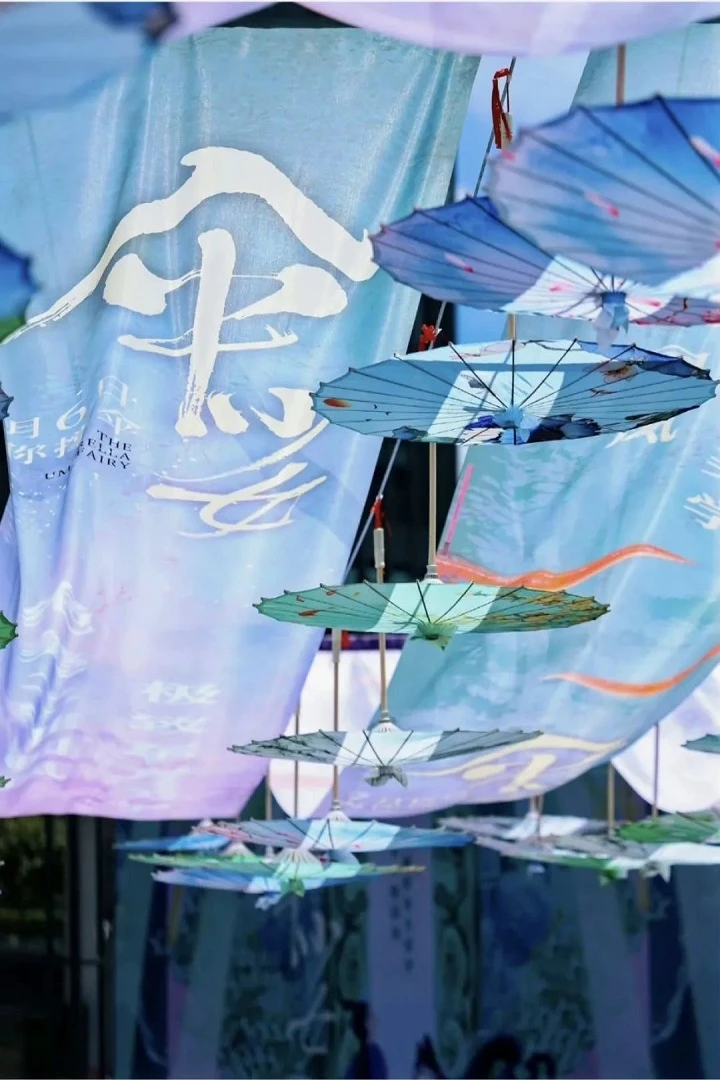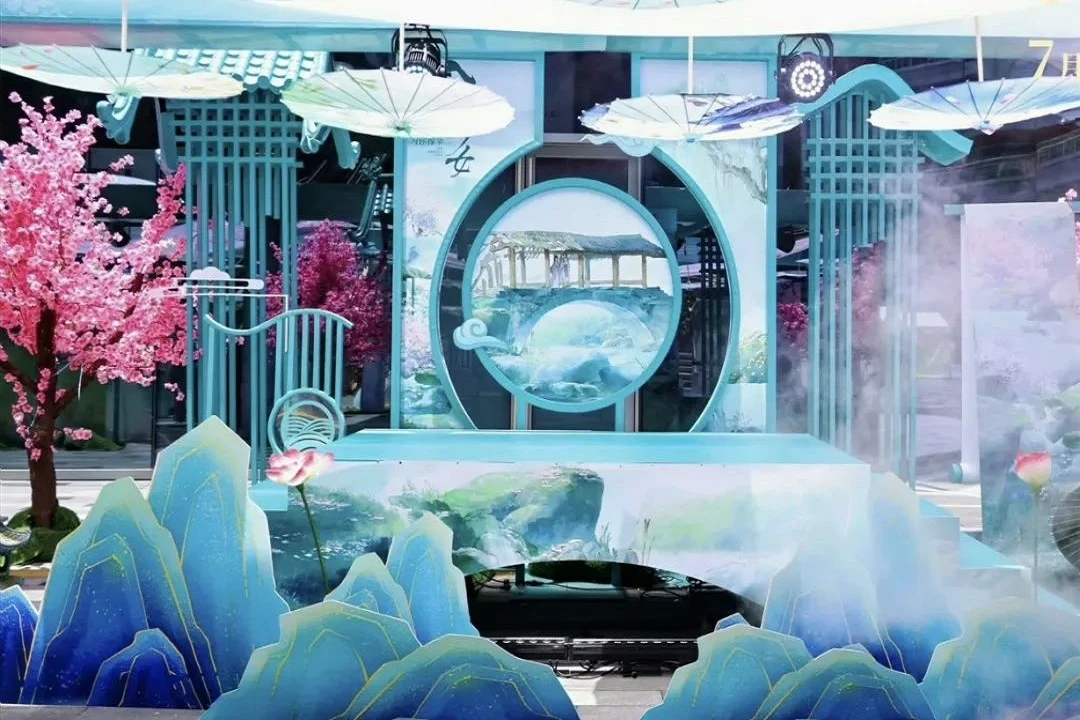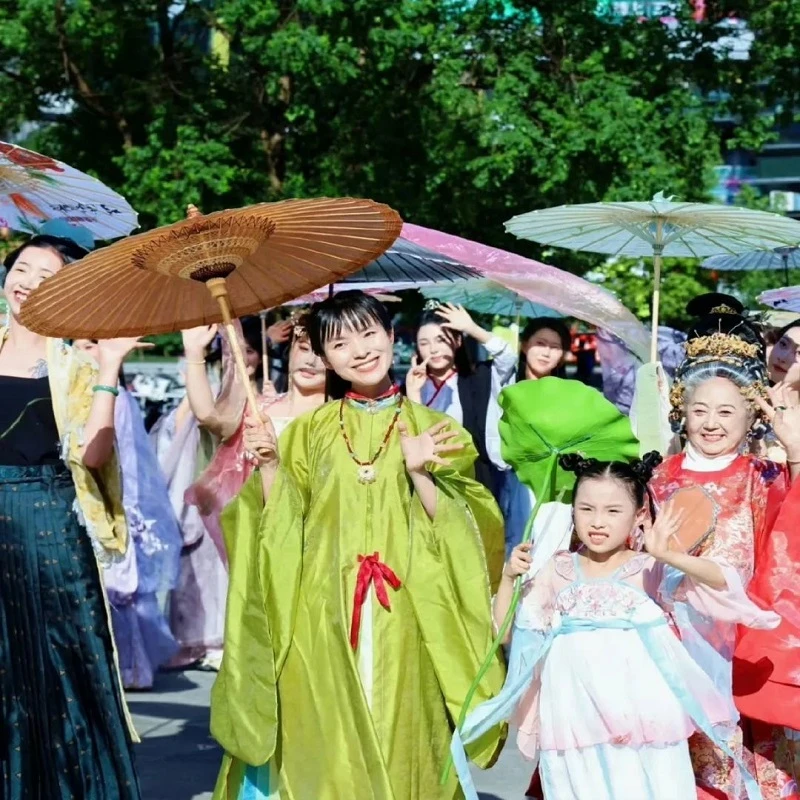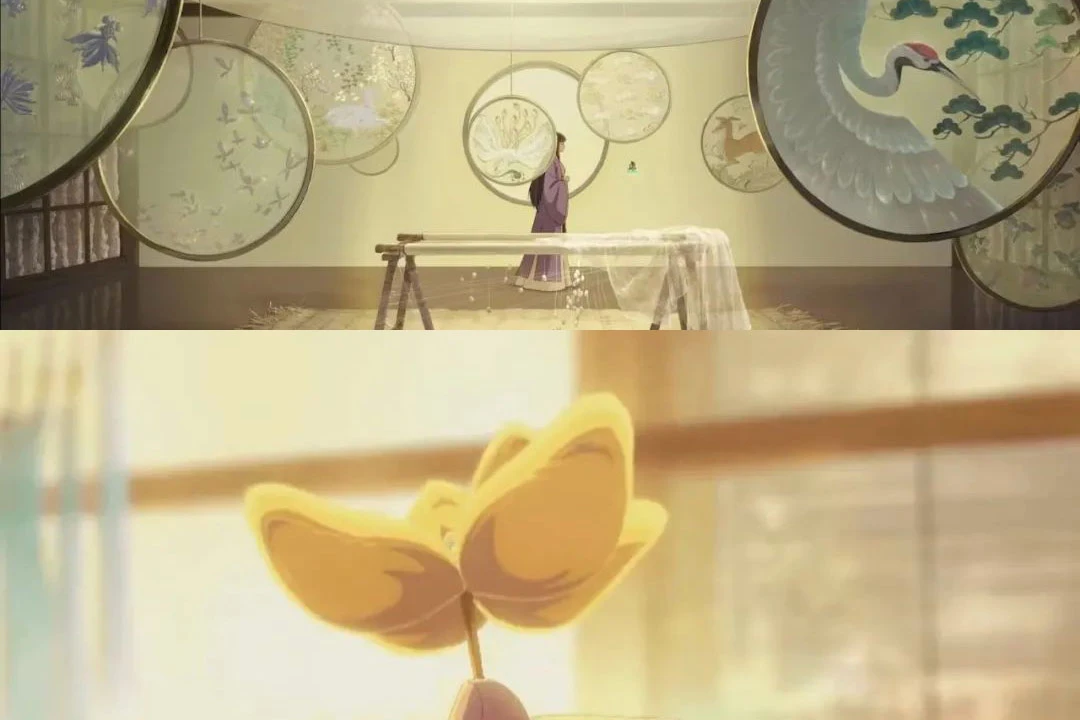The Premiere Event
On July 3rd, the premiere of the Guofeng animated film "Umbrella Fairy (伞少女)" was held at the Hangzhou Joy City Bona Cinema. The event was not just a typical film premiere but also a grand Guofeng carnival, attracting numerous enthusiasts of traditional Chinese culture.
The film's storyline revolves around Qingdai, the spirit of a Qingluo umbrella. To prevent another spirit, Wangui, from rekindling human warfare due to his personal obsessions, Qingdai embarks on a quest with a craftsman named Moxiang. This fantastical adventure not only showcases the ethereal beauty of Guofeng aesthetics but also delves deep into the true identities of the spirits and their growth throughout the journey.

Guofeng Elements in the Film
Despite its fictional setting, the film draws heavily from Song Dynasty history, with the ancient city of Lin'an (modern-day Hangzhou) as the backdrop. The characters are predominantly dressed in Song Dynasty-style attire. A closer look at the main characters' outfits reveals inner robes with overlapping collars, large-sleeved outer garments, and waist-length skirts.
Even the supporting characters' costumes are thoughtfully designed. For instance, the spirit "Little Lantern" wears traditional elements such as overlapping collars, Tang Dynasty-style shawls (披帛), and lotus patterns on the pants, showcasing various aspects of Guofeng design.
The film also emphasizes the importance of intangible cultural heritage. "Umbrella Fairy" not only highlights the concept of "Nianwuge (念物阁)" , a fictional place collecting all Chinese crafts over the past millennium, but also integrates traditional music. The original Yue Opera "Moon Fairy (月中仙)" is performed by Li Yunxiao of the Zhejiang Xiaobaihua Yue Opera Troupe, promoting both Yue Opera culture and the intangible cultural heritage of Ronghua (silk flowers).
Ronghua is a well-known traditional craft, not just an accessory often worn by Hanfu enthusiasts, but also a significant intangible cultural heritage. Historically, Ronghua was made to preserve the beauty of summer flowers and symbolize prosperity and good fortune. In the film, a pear blossom hairpin crafted with Ronghua techniques makes an appearance.
The Hanfu Carnival at the Premiere
The premiere event was combined with a Guofeng carnival, featuring guest appearances by renowned Hanfu enthusiasts, including Hanfu Grandma and popular influencers like Siyue. Hundreds of attendees dressed in Hanfu enjoyed a visual and auditory feast celebrating traditional Chinese culture.
The variety of Hanfu styles worn by the attendees was impressive, with some even cosplaying characters from the film. The sight of young men and women in meticulously crafted costumes was a highlight of the event. After the premiere, a Hanfu parade took place, captivating the attention of numerous visitors and further promoting Hanfu culture.
The instant success of "Umbrella Fairy" upon its release highlights not only the film's high-quality production and rich cultural foundation but also the ongoing revival and vibrancy of Hanfu and Guofeng culture. Many viewers praised the film for its perfect blend of intangible cultural heritage, Hanfu culture, and 2D Guofeng animation.
The initial promotional materials for "Umbrella Fairy" already captivated audiences with its exquisite Guofeng visuals, Hanfu, and intangible cultural heritage elements. Director Shen Jie mentioned that the crew learned to create crafts like Ronghua and Taixiu before illustrating them, demonstrating their sincere dedication to promoting Guofeng culture. The choice of Hangzhou as the setting was inspired by the city's timeless Song Dynasty charm and the allure of Hanfu culture.
The Role of Hanfu in Contemporary Culture
Hanfu, the traditional attire worn by the characters in "Umbrella Fairy," is more than just a costume. It is a symbol of cultural identity and pride. The revival of Hanfu culture reflects a growing movement among Chinese youth to embrace their heritage and showcase it to the world. Events like the Hanfu parade at the premiere of "Umbrella Fairy" are a testament to the strong sense of community and shared passion among Hanfu enthusiasts.
Hanfu has also become a medium for cultural exchange, attracting interest from people around the globe. Social media platforms are flooded with photos and videos of Hanfu aficionados from different countries, highlighting the universal appeal of this traditional attire. This global fascination with Hanfu fosters cross-cultural understanding and appreciation, promoting Chinese culture on an international stage.
The success of "Umbrella Fairy" and the vibrant community of Hanfu enthusiasts signal a bright future for Guofeng culture. As more films, music, and art forms embrace traditional Chinese aesthetics, there is a growing platform for cultural expression and innovation. This movement not only preserves the past but also paves the way for new interpretations and adaptations of ancient traditions.
Educational initiatives and cultural programs can further support this cultural renaissance. By integrating Guofeng elements into school curriculums and public events, there is an opportunity to instill a sense of pride and awareness in younger generations. Museums, cultural institutions, and media outlets can collaborate to create engaging content that highlights the beauty and significance of traditional Chinese culture.
As the story of Qingdai and Moxiang unfolds on screen, it mirrors a larger narrative of cultural rediscovery and celebration. "Umbrella Fairy" is a testament to the power of storytelling to preserve and promote heritage, inspiring audiences to appreciate and engage with the beauty of their cultural roots. In doing so, it ensures that the legacy of Guofeng culture will continue to flourish for generations to come.



